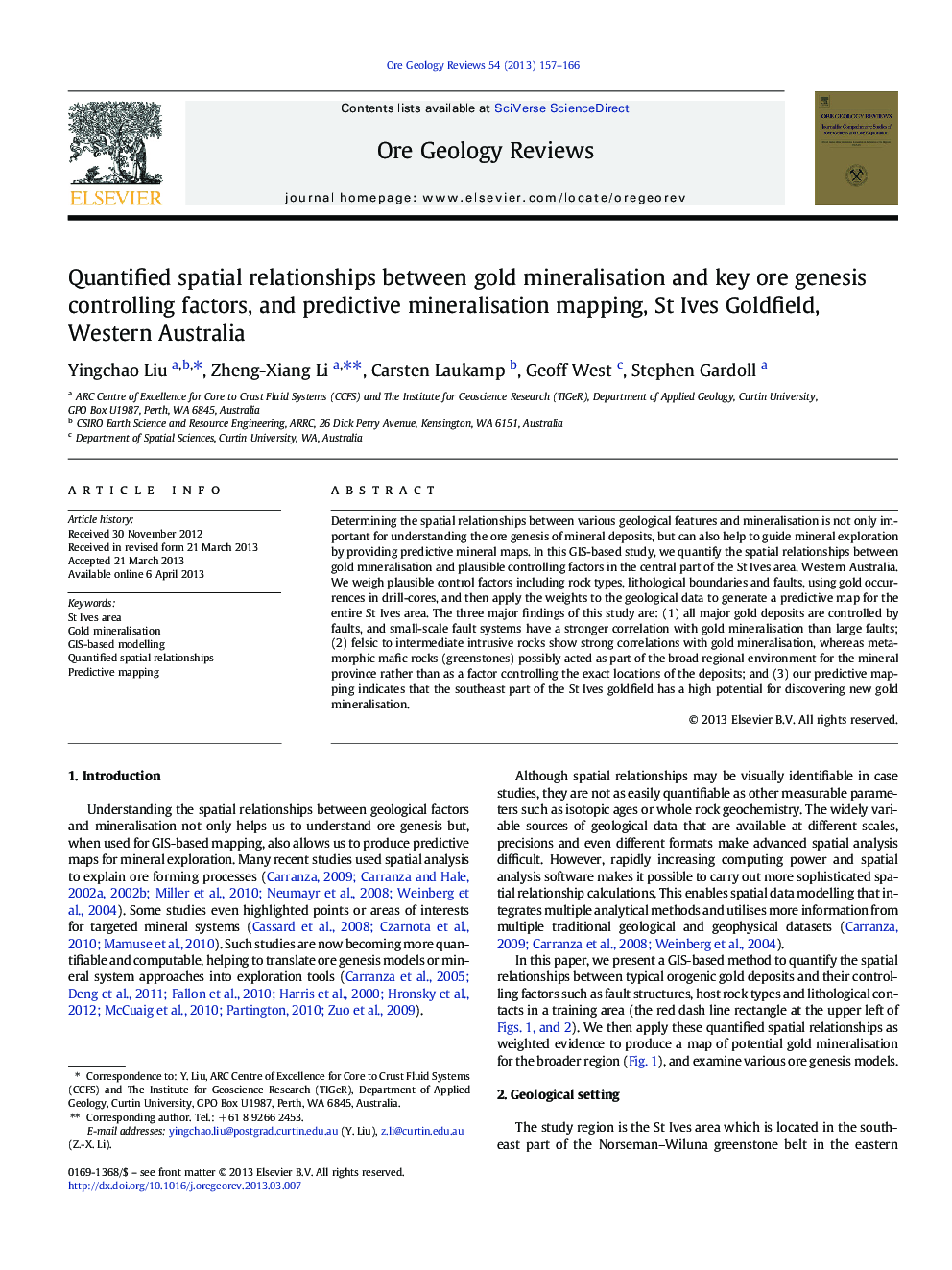| Article ID | Journal | Published Year | Pages | File Type |
|---|---|---|---|---|
| 4697467 | Ore Geology Reviews | 2013 | 10 Pages |
•Spatial correlations between gold mineralisation and control factors were quantified.•Small-scale fault systems have a stronger correlation with gold mineralisation.•Felsic to intermediate intrusive rocks show stronger correlations than greenstones.•A predictive mineral map was generated for the entire St Ives area.•The approach is applicable to any other commodity.
Determining the spatial relationships between various geological features and mineralisation is not only important for understanding the ore genesis of mineral deposits, but can also help to guide mineral exploration by providing predictive mineral maps. In this GIS-based study, we quantify the spatial relationships between gold mineralisation and plausible controlling factors in the central part of the St Ives area, Western Australia. We weigh plausible control factors including rock types, lithological boundaries and faults, using gold occurrences in drill-cores, and then apply the weights to the geological data to generate a predictive map for the entire St Ives area. The three major findings of this study are: (1) all major gold deposits are controlled by faults, and small-scale fault systems have a stronger correlation with gold mineralisation than large faults; (2) felsic to intermediate intrusive rocks show strong correlations with gold mineralisation, whereas metamorphic mafic rocks (greenstones) possibly acted as part of the broad regional environment for the mineral province rather than as a factor controlling the exact locations of the deposits; and (3) our predictive mapping indicates that the southeast part of the St Ives goldfield has a high potential for discovering new gold mineralisation.
